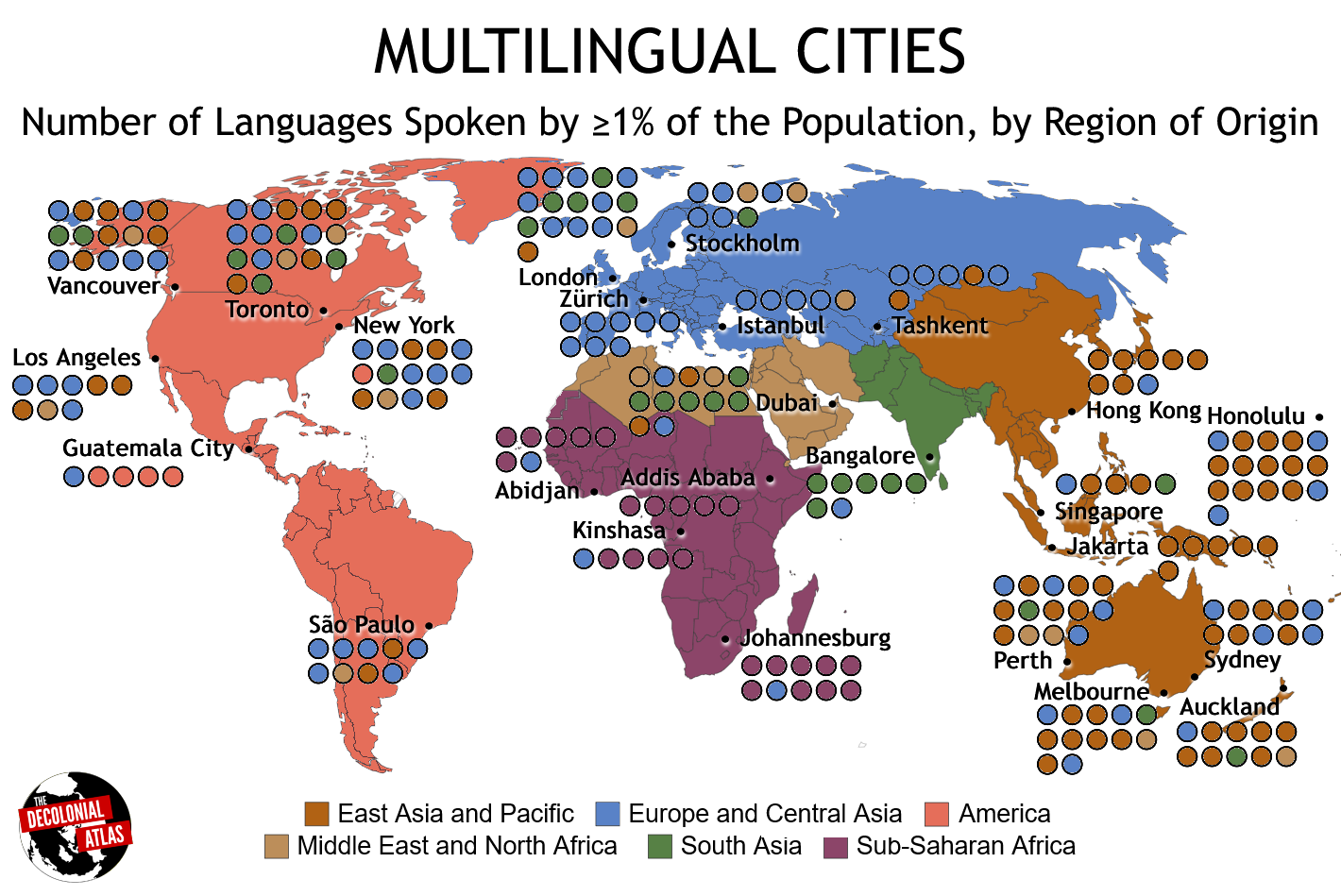Decolonial Atlas on Nostr: New York City is often regarded as the world's most linguistically diverse urban ...
New York City is often regarded as the world's most linguistically diverse urban center, boasting around 700 of the world's 7,000 languages spoken on its streets. But most languages in NYC are spoken by communities making up a small fraction of the population. To understand urban linguistic diversity on a larger scale, we created this map, as larger communities represent a barrier against assimilation. Many cities lack comprehensive language demographic data, particularly for languages spoken by less than 1% of the population. The absence of official data necessitates estimates from language communities themselves, underscoring the need for cities to collect and evaluate demographic and linguistic data for better understanding.
Toronto claims the title of the world's most linguistically diverse city, with 17 languages spoken by more than 1% of the population according to the 2021 census. These languages include English, French, Mandarin, Cantonese, Tagalog, Spanish, Portuguese, Tamil, Italian, Farsi, Urdu, Russian, Arabic, Korean, Bengali, Vietnamese, and Gujarati. Notably, Indigenous languages are absent from this list. For urban Indigenous linguistic diversity in the Americas, Guatemala City, with its many Maya languages, leads the way.
Cities with linguistic diversity have a duty to provide government services, forms, and information in multiple languages, especially for vital services like healthcare, housing, and emergency response. San Francisco's Language Access Ordinance in the U.S. stands out as a strong local language law, ensuring accessibility for residents with limited English proficiency through translation and interpretation services.

Toronto claims the title of the world's most linguistically diverse city, with 17 languages spoken by more than 1% of the population according to the 2021 census. These languages include English, French, Mandarin, Cantonese, Tagalog, Spanish, Portuguese, Tamil, Italian, Farsi, Urdu, Russian, Arabic, Korean, Bengali, Vietnamese, and Gujarati. Notably, Indigenous languages are absent from this list. For urban Indigenous linguistic diversity in the Americas, Guatemala City, with its many Maya languages, leads the way.
Cities with linguistic diversity have a duty to provide government services, forms, and information in multiple languages, especially for vital services like healthcare, housing, and emergency response. San Francisco's Language Access Ordinance in the U.S. stands out as a strong local language law, ensuring accessibility for residents with limited English proficiency through translation and interpretation services.
